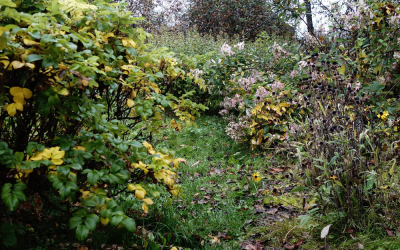As a professional tree surgeon working across Manchester and North West, ,we often get asked about tree pollen—especially during the spring and summer months when allergies flare up and trees begin their annual cycles. In this article, we’ll break down what tree pollen is, why it matters, and which tree species in the UK produce the most pollen. Whether you’re an allergy sufferer or just interested in your local landscape, this guide has you covered.
What Is Tree Pollen?
Tree pollen is a fine, powdery substance produced by the male parts of a tree’s flowers or cones. Its main job is to fertilise female flowers, enabling the tree to reproduce. Most trees rely on the wind to carry pollen to other trees, which means large quantities are released into the air during pollen season.
While pollen plays a crucial role in nature, it’s also a common allergen. When people talk about “hay fever” in early spring, it’s often tree pollen-not grass or weed pollen- that’s to blame.
When Is Tree Pollen Season in the UK?
Tree pollen season in the UK generally begins in late February and can last until June, depending on the type of tree and the weather. Here’s a rough breakdown:
-
Alder, hazel, and yew: Late February to March
-
Birch, ash, and willow: March to April
-
Oak, plane, and sycamore: April to May
-
Pine and lime: May to June
These timelines can shift depending on your region and the year’s climate. Warmer, drier springs often lead to higher pollen counts and earlier starts to the season.
Common UK Trees That Produce Allergenic Pollen
While all trees produce pollen, not all of it is allergenic. Here are the biggest culprits for triggering allergies in the UK:
1. Birch (Betula species)
Birch trees are one of the most allergenic trees in the UK. Their pollen is lightweight and can travel for miles on the wind. Birch pollen season usually peaks in April, and even small amounts can cause strong allergic reactions.
2. Oak (Quercus species)
Oak pollen is released in late spring, often following birch season. Though oak pollen grains are larger and heavier than birch, they are still highly allergenic for some people.
3. Ash (Fraxinus excelsior)
Ash trees release pollen in March and April, overlapping with birch season. Their pollen can also cause moderate to severe allergy symptoms in sensitive individuals.
4. Hazel (Corylus avellana)
Hazel trees start releasing pollen as early as February, making them one of the first trees to trigger seasonal allergies each year.
5. Plane Tree (Platanus species)
Common in urban areas, especially in cities like London, plane trees release pollen in mid to late spring. Their pollen can be a real nuisance in high-traffic areas.
6. Alder (Alnus species)
Another early pollen producer, alder trees start spreading pollen in late winter to early spring, and are particularly common in wetter parts of the UK.
Tree Pollen and Hay Fever: What to Know
Hay fever caused by tree pollen can lead to symptoms such as:
-
Sneezing
-
Runny or blocked nose
-
Itchy eyes and throat
-
Fatigue
Tree pollen allergies often get confused with colds or other illnesses because of the overlapping symptoms. If your symptoms appear at the same time every year, especially in early spring, it might be worth keeping track of the pollen calendar.
How a Tree Surgeon Can Help
As tree surgeons, we don’t just deal with tree removals and pruning- we also help customers manage the trees on their property to reduce the impact of pollen. Here’s how we can assist:
Strategic Pruning
Regular pruning, especially of male pollen-producing branches, can help reduce the amount of pollen a tree releases.
Tree Species Selection
If you’re planning to plant new trees, we can recommend low-allergen or female-only trees that produce little to no pollen. Female trees don’t produce pollen- they receive it- so they’re a good option for allergy-sensitive areas.
Tree Removal or Replacement
In extreme cases, removing high-pollen trees like birch or hazel and replacing them with less allergenic species can make a big difference-especially for schools, hospitals, and residential gardens.
Tips for Managing Tree Pollen Allergies
-
Keep windows closed during high pollen days (usually early morning and late afternoon).
-
Shower and change clothes after being outdoors.
-
Use pollen filters in your car and home ventilation systems.
-
Check daily pollen forecasts (Met Office provides regular updates during pollen season).
-
Talk to your GP or pharmacist about antihistamines or nasal sprays if your symptoms are severe.
Final Thoughts
Tree pollen is a natural and essential part of the ecosystem, but for many people across the UK, it also brings unwanted allergy symptoms. As local tree surgeons, we’re here to help you understand what’s growing in your garden and how it might be affecting your health.
If you’re struggling with high-pollen trees on your property or are considering planting new ones, get in touch for a consultation. We can help you make informed choices that benefit both your landscape and your well-being.



